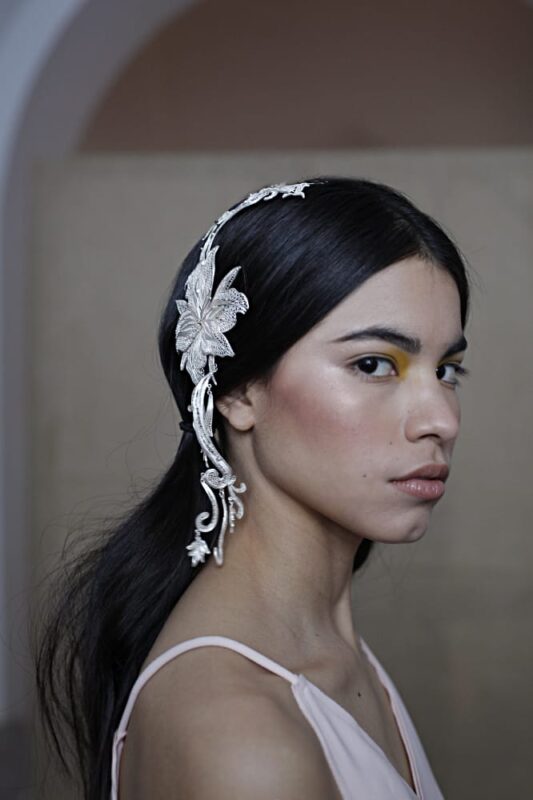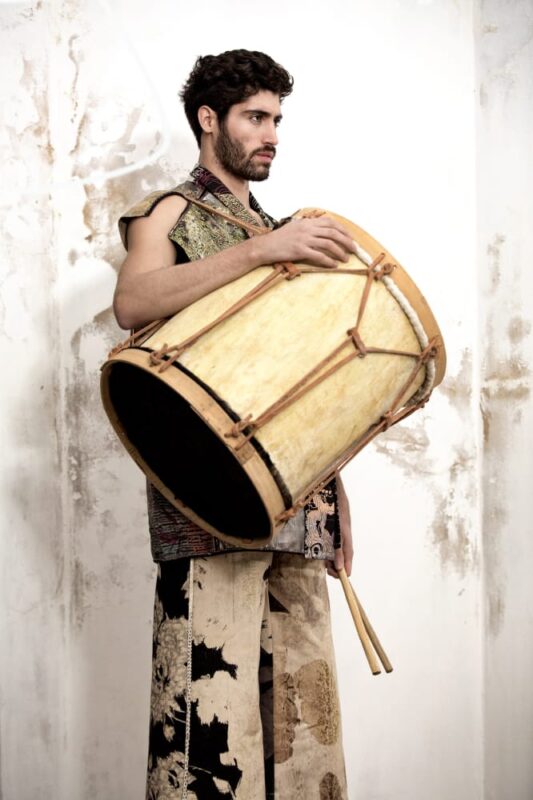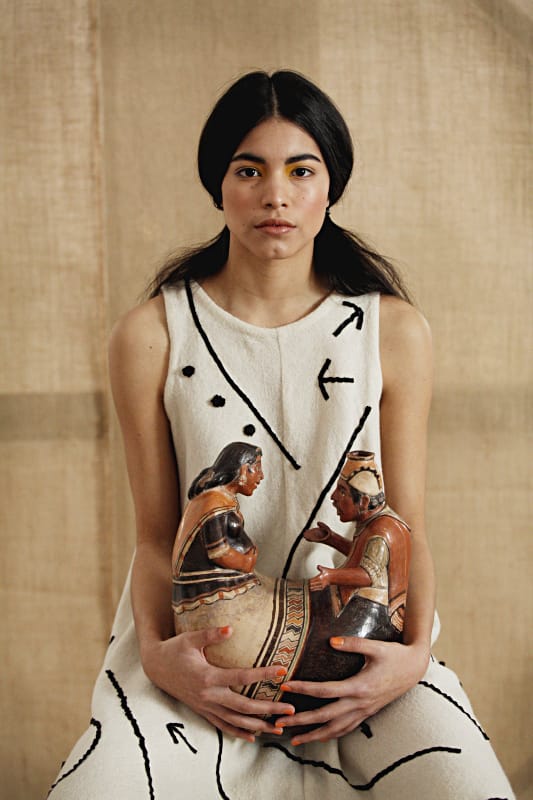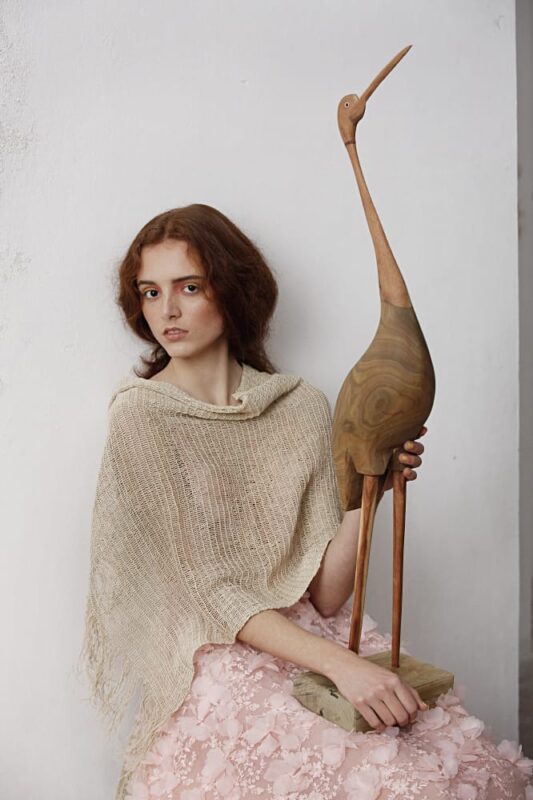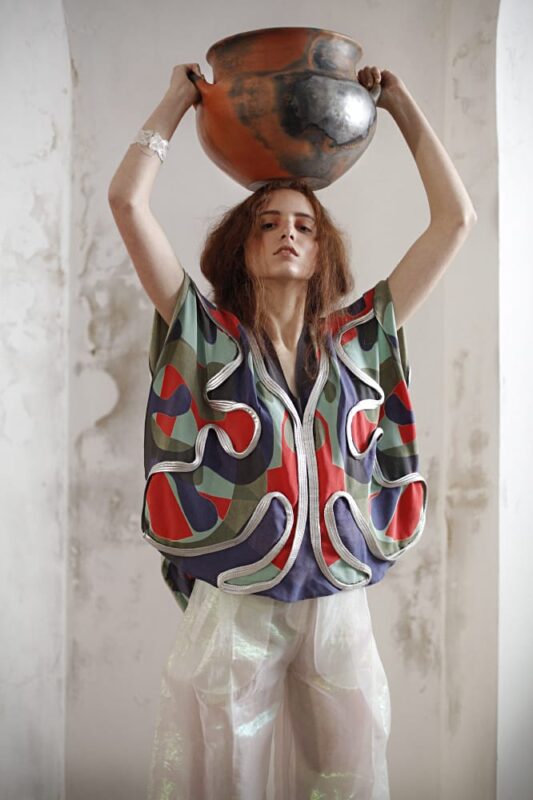Argentina has a rich, vast culture and a great part of it comes from the many native communities that are scattered throughout its territory. All of them create handcrafted items that reflect their ancient story and knowledge. The National Market of Traditional Craftsmanship of Argentina (MATRA) is a programme that depends on the National Ministry of Culture. They give artisans more visibility and improve their working and commercial conditions in order to protect cultural diversity. We met Roxana Amarilla, Director of MATRA, and had the following conversation about traditional craftsmanship, the importance of these precious objects and their creators.
What is MATRA’s function?
The programme was created in 1985, so it was born with the democracy. It is defined to prioritize traditional craftsmanship, which is the one that originated in peasant or native communities, whose wealth of knowledge regarding techniques and raw materials is passed on from generation to generation within families, in their own homes. This means that you can only learn how to produce them by working with an older artisan master from the community. Another feature is that these communities are really conscious of the fact that they are represented by the handcraft.
Furthermore, another important focal point of the programme is craftsmanship quality. MATRA helps to develop and promote quality artisans on the criteria defined by both UNESCO and the World Craft Council (WCC). These parameters include: identity, commercialization, respect for the environment, high technique and skills expertise and innovation. All of these variables suggest a high quality for handcrafts, so we try to detect, encourage and promote them.
What are MATRA’s activities?
We have been developing a map of craftsmanship fairs and festivities. Our intention is to bind together high quality traditional artisans with these events. At some point, we realised that the universe of fairs and festivities was too wide and that there was little systematization so we needed to tackle another issue first. We started working with other technical teams from other ministries to make a plan and recommendation for better management politics. The result was the Quality Directives for craftsmanship fairs and festivities.
On the other hand, we are part of a national committee of an international programme of quality from the WCC and sponsored by UNESCO, which gives recognition to the quality of artisanal products from the Southern Cone. This biannual and rigorous programme already has five editions and convenes artisans to offer them a certification. We call international judges that don’t know Argentine artisans but are able to evaluate ruthlessly the product by their expertise as well as taking into consideration the trend on artisanal crafts abroad.
When it comes to peasant, mixed-raced and native communities, we detect those with an important artisanal development and where they are located. We try to circulate their work, to make it visible for the rest of the society, and to stop the handcraft from being anonymous. For example, you see a piece that comes from the Wichi community, but there are artisan masters behind, with a name and surname; such as Ester Solano, who is from Chohot Association in Chaco. She presented an enormous chaguar blanket to the Committee that was considered the best piece by the international experts.
One of the main problems that has come to our attention is the lack of information. We must give recognition to people with name and surname, to communities that develop iconographies, morphologies and artisanal quality with techniques inherited from a long time ago.
Enlarge
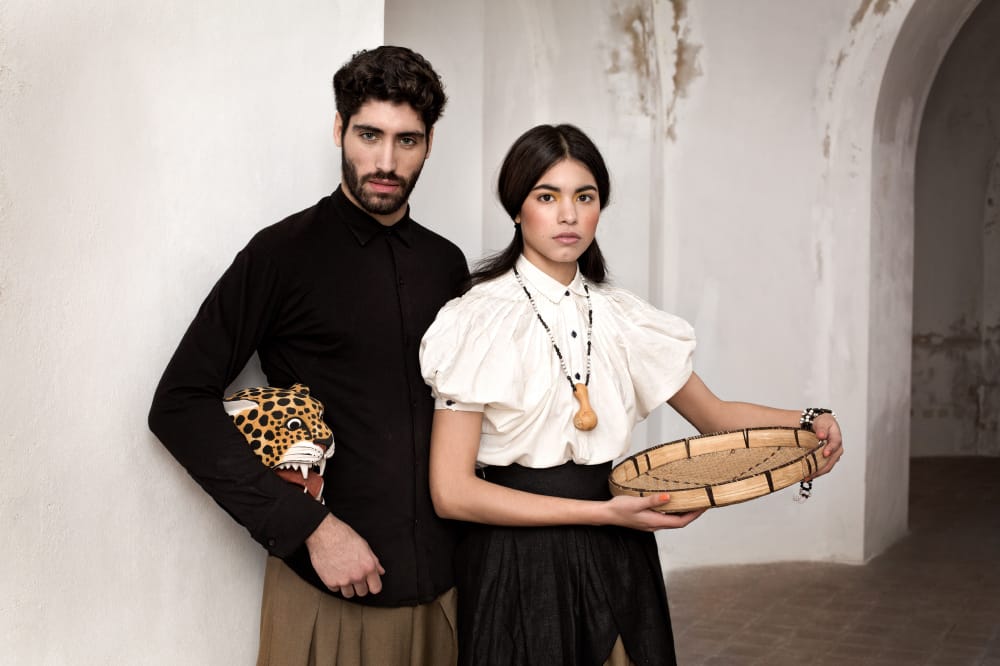
Courtesy of MATRA
Why do you think we know so little about our local craftsmanship?
On one hand, the logic of the craftsmanship field is much slower and isn’t characterised by having processes of advertising and visibility. On the other hand, both the state and society are in debt to it.
The state doesn’t assume the responsibility of working together in a rational way. As a result, you find that there are governmental programmes that develop design and innovation without paying attention to the patrimonial side; others that take into consideration only the patrimonial and believe that design and innovation isn’t helpful. Meanwhile, artisans need to make a living by selling their handcrafts. Some of them are lacking management tools, connectivity, better routes for sale, or guaranteed access to their ancestral raw materials. Each one has different problems but there’s a necessity of someone capable of resolving them, which ideally would be the state.
Apart from that, society doesn’t appreciate craftsmanship. It looks outwards, searching for whatever comes fast and industrialised. You stand before an incredible artisan that creates tubular sashes using looms and ancient techniques but the people’s reaction is to say “this is expensive”. We need to have a social conscience of what those works of art really mean, and knowing that it would remain at your home for your children and grandchildren, that it is a valuable piece of work, something that may double or triple its price within few years.
We need to learn to appreciate the handcraft as what it is. There are many things behind each piece. We ought to see the process and the creativity that implies: behind craftsmanship there’s design, exquisiteness, fineness, a view of the world, morphological synthesis, incredible aesthetic resolutions.
MATRA had a stand during the last edition of Buenos Aires Fashion Week (BAFWEEK). What was its origin?
We have been flirting with fashion for a long time. It first happened during an edition of the Market of Argentinean Cultural Industries (MICA), when Andrea Servera and Florence Argüello, fashion producers, were working on a general concept for the event’s runway. They contacted the Ministry and made a proposal to unite Argentinean clothing design and craftsmanship. MATRA was called to join the project and we indicated that it would be interesting to show handcrafts as conceived by the artisans. So, clothing from twenty-four provinces was shown, respecting the cultural matrix of the object. That’s how the first partnership was born and from that moment on, we started to promote appearances of high quality craftsmanship at regionals MICAs. As a result, we participated at other fashion shows.
Regarding BAFWEEK... the project was a 360 stand with two sides. On one side, an experience shared between design and craftsmanship; and on the other, a campaign based on how craftsmanship is used, but marked with the air and scent from the object’s place of origin.
What was the campaign like?
We created something like universes, combining the handcrafts and clothing design. The world of tigers set in Yungas or jungles, where the marvelous mbyá basketmaking, made by the Guaraní people in Misiones, and the tiger masks from the Chané Community in Campo Duran, Salta, were displayed. Another world was set in the quichuista hills in Santiago del Estero, where we showed baskets from Río Hondo and drums. The Andean world exposed ceramics created by Casira, a community from Jujuy, considered one of the best potteries from Argentina, with a Martin Churba’s outfit. Then, a pilagá world, which involves the homonymous community from Formosa and its basketmaking; and a Wichi one, with incredible wooden carvings and a wonderful dress by Javier Saiach.
Anyway, we navigated the Spring-Summer season using the fashion language and bearing in mind the exhibition space. The result of the campaign was an incredible series of pictures. The photographer was Gisela Filc, the costumer was Fernando Martumanian and Florence Argüello was the stylist. A great number of artisan masters provided their pieces and we were in charge of the production. We showed successfully the high quality craftsmanship from our country.
Are you planning to repeat the experience?
I believe that there’s a constant demand for the design world to join the craftsmanship world. Beyond a particular action from our programme, there are others that are replicating this experience in other Ministries, such as Emprendedores de nuestra tierra (Entrepeneurs from our land). And I think that this will be going in depth because it is something that gives us identity.
Enlarge
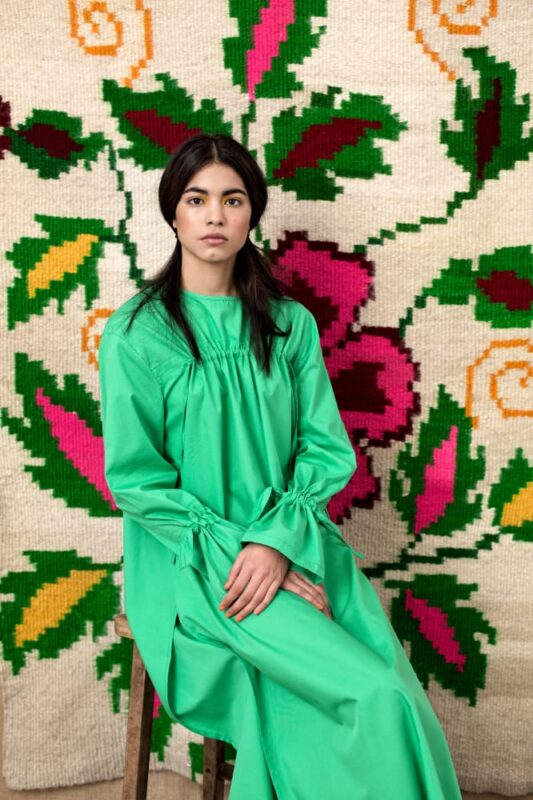
Courtesy of MATRA
What is the local scene for craftsmanship like?
There’s a basic issue and it is the ABCs of sustainability: fair trade and price. It involves a great respect for the art created by our artisan communities. This is essential to be able to describe our country as one that respects its craftsmanship and is proud of it.
For instance, it caught my attention that Mexican intellectual women always wear a rebozo (a native shawl) or a huipil (a native blouse or dress), or something handcrafted. Here, using a chaguar handbag was only fully appreciated if you studied philosophy; whereas now, thanks to a lot of people (including designers and the struggle of the communities), we know that there’s a hard, delicate and artisanal work behind each object, that also has high quality and importance.
I believe that this dimension of craftsmanship will be on the rise. In my opinion, our country will take a leap forward, leaving behind the attitude of looking abroad. In other words, you would travel to México and bring a Huipil or some other handcraft, but you don’t have a basket from Río Hondo, which are exquisite. This will definitely change.
How do you think this will change?
The key is collective effort. The levels of consciousness reach several sectors. It would be foolish to say that it comes from only one. The state needs to mature. We need important participative channels for artisanal artists. We need an academy that formally studies craftsmanship, in order for popular art to be understood and examined from an aesthetic point of view. We need the world of economical circulation of craftsmanship to take responsibility both socially and culturally. There are some things that shouldn’t be done. You can’t eliminate ancestral iconographies to lower the costs, for instance. When it comes to commercialisation, there are certain recommendations to be made and accept consciously. We need to make great improvements to the conditions of craftsmanship fairs. When it comes to municipal producers and events, the important thing is not at the stage, but in the stalls and we have to take care of them.
In addition to all of this, the country must take into consideration the industrial manufacturers that are imported to our country and compete with handcrafts. This would be the case of aguayos (a multi-coloured woolen cloth) or industrialised ponchos. They have an artisanal appearance but aren’t actually the result of artisanal processes nor come from local factories. They enter our market because are cheap and appeal to tourists as souvenirs, disloyally competing with genuine artisanal production from Argentina.
Finally, from the artisan part, I don’t think they need to do more than create beauty. Because of its features, their sector is very flexible and keeps amazing us with their responses to some contexts and problems.
What does traditional craftsmanship have to offer?
Traditional craftsmanship is a great magic spell, a one-way trip. When you start learning about it, you get in contact with the piece, the procedure of creating it makes an impact, and then, you are amazed by the history. Also, you realise that all traditional craftsmanship is practical and, therefore, perfect. For instance, a soguero master (an artisan that works with cords to make elements related to horsemanship) from Buenos Aires province once said: “Our craft is really hard because we make precision instruments.” I didn’t understand it because I only saw the braided pieces and its aesthetics features. He replied, “This that you see here is placed on the horse in a certain way and if it is slightly bad done, the animal gets hurt”. Then, I could see that you need the same precision in other products: for a basket to close entirely, for a poncho to protect you from the extreme cold without being too heavy. All traditional and artisan procedures must have been done with precision. As a result, they enclose both science and art. I believe we are facing a world of exquisite objects and knowledge. To me, all traditional craftsmanship is synonymous with refinement. The contrasting colours created by the women that weave with looms in Santiago del Estero may seem shocking at first, but the same tones appeared through the years as Pantone Colours trends. Traditional craftsmanship is the future of fashion, creativity and our general civic culture.
#YoUsoArtesanías Campaign credits
Photographer: Gisela Filc.
Stylist: Florence Argüello.
Costume assistant: Fernando Martumanian.
Make up artist: Vero Mendoza.
Hair stylist: Olivera Estudio.
Production: National Ministry of Culture, Sub secretary of Culture and Creativity, Sub secretary of Creative Economy, National Directorate of Creative Industries, MATRA.
All pictures are courtesy of MATRA.

